#brian kehew
Text
Who has all the Tapes? Brian Kehew has all the Tapes!
15 notes
·
View notes
Text
Matthew Sweet Live Preview: 4/5, Metro, Chicago
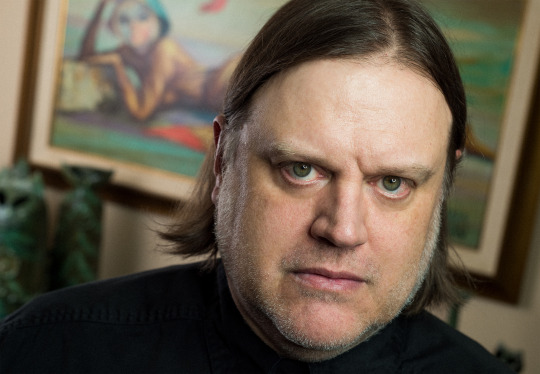
Photo by Evan Carter
BY JORDAN MAINZER
Tonight, at Metro, power pop aficionado Matthew Sweet returns to Chicago after over 5 years away. Though his most recent album was 2021's underrated Catspaw, and he is purportedly at work on a new studio record, it's actually a different recent item he shared that has me excited. Earlier this year, Sweet released his July 4, 1993 show from Grant Park, recorded by Metro Mobile Recording for WXRT. The show consisted of songs from his 1991 breakout Girlfriend, yes, but also much of Altered Beast, which would come out weeks later.
You can tell from the recording why it's considered one of Sweet's best-ever shows. Though you can imagine the crowd melting on a hot day as two of the first four songs played were slower in tempo and likely unfamiliar, yet to have their studio versions drop, it's clear concertgoers ate up the band. Television's Richard Lloyd, who lent his axe to Girlfriend, plays lead guitar, while Tony Marsico's (Cruzados, Bob Dylan) on bass and Will Rigby's (the dB's) on drums. They add dynamic riffs and meaty fills on "The Ugly Truth", and their mammoth breakdown on "Evangeline" generates applause from an audience charmed by the song's otherwise bright, buoyant melodies. And even the slinkier, more psychedelic tunes like "Do It Again" and "Reaching Out" are crystal clear. The whole collection was remixed and remastered from the original DAT source by engineer Brian Kehew, and you can hear not just Sweet's banter but even moments of crowd chatter. At one point, someone says, "Nice to see you, bro, let's get lunch," like it's an outtake from "Undone (The Sweater Song)".
Of course, though devoted fans were probably foaming at the mouth hearing so much new material, the Girlfriend songs were the unabashed highlights of the set, from the Rolling Stones strut of "Does She Talk?" to the epic, cascading "Divine Intervention". When Sweet introduces the title track, he says, "If there's any song of mine you know, this might be the one," and for good reason: He never wrote another earworm quite like it. Funny enough, Lloyd did not play lead guitar on the album version (it was Robert Quine), but his distorted solo here absolutely rips. By the time Sweet plays the final two songs of the afternoon, covers of John Lennon's "Crippled Inside" and The Troggs' "I Want You", you get a true sense of his appreciation for pop music and songwriting, and at the moment he was on stage, he was the one on top.
Not to say he won't be great tonight! Sweet should deliver an excellent set. Singer-songwriter Abe Partridge opens. Doors at 7:00 PM, show at 8.
youtube
#live picks#matthew sweet#metro#abe partridge#wxrt live in grant park chicago IL july 4 1993#evan carter#catspaw#grant park#wxrt#metro mobile recording#girlfriend#altered beast#television#richard lloyd#tony marisco#cruzados#bob dylan#will rigby#the db's#brian kehew#the rolling stones#robert quine#john lennon#the troggs
0 notes
Text
Sabrina The Teenage Witch™ (The Album) (1998)
Backing Vocals – Lindsey Buckingham, Matthew Sweet, Susanna Hoffs
Bass – Tony Marisco
Guitar – Lindsey Buckingham, Matthew Sweet
Piano – Brian Kehew
Written-By – Walter Egan
5 notes
·
View notes
Text
Cameron Ash. To Hell and Stuck. 2002 Album.
"Breaking through the surface of manufactured Pop-princesses and flashy Kid-Rockers and maintaining an honest lyrical voice has become increasingly rare in today's music market. On his album, To Hell and Stuck, Cameron Ash fights to do just this. Staying true to it's namesake, the lyrically-driven album reveals itself as a series of undeniably dark reflections, unconcerned with radio-friendly frivolity and political correctness. Whether lashing out at blatant societal injustices or elevating us with his more visceral love songs, Cameron Ash uses his unique style and often biting lyrics to achieve emotional sincerity and make an intimate connection with his audiences. 'It's true.
People tell me that my lyrics on love are slightly different from Celine Dion's,' he says. Cameron's unique lyrical ability of combining classical poetry, storytelling, and dark humor in his songwriting began at a very early age. The grandson of a well-known Persian poet and philosopher, he began writing poetry at the age of six. But it was in high school, when he was first introduced to the music of Don McLean, that he began to shift his interest to songwriting. 'Don McLean's 'Vincent'was the reason I started writing songs,' he says. 'So that one day, I might make someone feel the way I did at that moment.' By 2000, armed with his songs, he began playing frequently around San Diego (desperately anticipating exodus from UCSD, where he attended college) while building his name within the San Diego acoustic scene. But it wasn't until a representative from Maverick Records heard his song 'Stop Her'and invited him to play at the Maverick 'Battle of the Bands' that he decided to bring his music to Los Angeles. It was here where Cameron underwent a songwriting rebirth, which resulted in him writing six of the fourteen songs that appear on To Hell and Stuck, including the single 'Another Everyday.' 'It's difficult because I find I can only write well when I'm either internally devastated, or under immense pressure, or heartbroken,' he says. If Cameron's poetry is born out of devastation, that's bad news for him but good news for the listener, as he never skimps on sincerity. In fact, the 14-song album was recorded without any computers by producer Brian Kehew (Air, Eleni Mandell) to achieve the classic, non-affected analog sound. Besides it's warm human feel, the mostly acoustic record also boasts Cameron's diverse writing ability, as he incites the listener with the driven, menacing sounds of 'Jude is Dead'and the volatile lyrics of 'LAPDVD',then floors us with the ultra-'Sadcore' Elliot Smith-esque sounds of 'Surgeon' and 'Another Everyday.' He even finds time for sarcasm and bittersweet humor in 'Stop Her' and 'Popcorn Boy', but never hesitates to bring us into the deeper darker realms with songs like 'Stalker.' Whatever the song, Cameron Ash never shies away from revealing the somber sides of life. With his signature cynicism and engagingly confrontational lyrics, he is modern day cross between Simon and Garfunkel and Rage Against the Machine. At times brooding, often inciting, and always earnest, Cameron Ash is the hyper-lyrical-renegade-chic posterboy of his own militant acoustica. His lyrics seem to speak to both men and women, and he offers us a different perspective and a lasting song in a world that's desperately seeking to break free from homogenized, disposable music. From first gasp to last breath, Cameron Ash's To Hell and Stuck is a driving poetic outcry, delivered with passion and a lyricism that is both intelligent and pure. Copyright 2002."
#cameron ash#lyrics#cameron ash javadi#another everyday#2002#acoustic#to hell and stuck#no computers#michael jude
0 notes
Text
Updated list of bands that I have seen live - August 2023
Robert Plant x7
Weezer x5
Flogging Molly x4
Fu Manchu x4
Alanis Morissette x2
Berlin x2
earthlings? x2 (first one included guests Josh Klinghoffer and Chris Goss)
Fenians x2
Garbage x2
Hot Hot Heat x2
Jerry Cantrell x2
Kings of Leon x2
Lifehouse x2
Mojave Lords (including guest Sean Wheeler) x2
Ozomatli x2
Smashing Pumpkins x2
Sean Wheeler x3 (guest appearances with Brant Bjork & Mojave Lords)
Brian Wilson x2
311
A Flock Of Seagulls
The Aggrolites
Alain Johannes
The Aquabats!
Arcade Fire
The B-52s
The Bangles
Travis Barker & DJ AM
Beck
Best Coast
(BIG)PIG
Big Scenic Nowhere
Biz Markie
Brain Vat
Brant Bjork
Blasting Concept
Blind Pilot
Blues Traveler
Bouncing Souls
The Bravery
Jeff Bridges and the Abiders
Cake
Candlebox
Circa 62
Gary Clark Jr.
The Creepy Creeps
Death Machine II
Dishwalla
The English Beat
Fatso Jetson
Fenix TX
Fishbone
FM-84
Foo Fighters
Michael Franti and Spearhead
The Freeks
Gabriella Evaro
Garbage
John Garcia (acoustic w/Ehren Groban)
John Garcia and the Band of Gold
Kyle Gass Band
Current version of The Glenn Miller Orchestra
Goldfinger
Hollywood U2 (cover band)
Israel Vibration
Jet
The Lions
Little Axe
Live
Los Lobos
Madcap
Madness
Madonna
Marcy Playground
Mammoth Thunderpower
Mates of State
Maureen and the Mercury 5
Paul McCartney
The Midnight
Missing Persons
moe.
The New Dubliners
The New Pornographers
Nobody Cares
Oasis
Nick Oliveri (Death Acoustic)
One Man Army
Ozma
Jimmy Page & The Black Crowes
Page & Plant
Petty and the Heartshakers (cover band)
Robert Plant and Allison Krauss
Ra Ra Riot
Red Hot Chili Peppers (caught Chad’s shredded drumstick after Under the Bridge)
The Rentals
The Revolution
The Romantics
Save Ferris
Smash Mouth
Current version of The Sons of the Pioneers
Ringo Starr (2 songs with Paul McCartney)
Steel Pulse
Stinky Pinky
Stöner
Three Dog Night
Thunderpussy
Transers
Tricky
U2
Violent Femmes
M. Ward
Stevie Wonder
Yawning Man
Yeah Yeah Yeahs
ZenToniC
Zwan
-Didn’t see live, but was in the vicinity or interacted-
I was at a record signing for the Pretenders at Licorice Pizza at La Cumbre Mall in Santa Barbara and met the band when I was 10 months old or so. I don’t remember it, but Chrissie said I was going to be a drummer. I guess I was banging on the table.
Should have been at the Where The Streets Have No Name video shoot, but U2 started early thanks to the LAPD and I missed it by an hour. People were still hanging out at the corner in downtown LA when I got there. Eventually got around to seeing U2.
I had an email exchange with Brian Kehew of The Moog Cookbook sometime around 1999.
I camped at the next campsite over from Gyl Bonus, guitar player for The B Foundation. I haven’t seen them live, but I hear it’s a great show.
I had a ticket to see Jimmy Page and the Black Crowes with Fu Manchu in Irvine in 2000, but Jimmy cancelled the tour. Technically, I have seen both bands, so this should not be in this section.
Was invited to the recording of the live section of the “Enemies” EP by Frank Jordan, but I had to work my shift at Kmart. I should have gone.
A friend offered to give me his ticket and could have made it to the last half of a Pearl Jam concert in Irvine, but was too lazy. I should have gone.
Back to Santa Barbara, Bob Marley & the Wailers played a concert and I was in the same city at the same time but I was 3 months old or some shit. I wish I could have gone and been capable of enjoying it.
I was in close proximity to Johnny Halliday and his wife when they arrived at LAX a few years ago. Johnny was known as the “French Elvis”. There was a good amount of paparazzi, so I may be in the background of a picture in a French tabloid.
Met the band Spacetrucker at the Sky Valley sign on their tour which included Stoned and Dusted the next day. They gave me a free copy of their first album and the whole experience was amazing and magical.
Have been the presence of Dandy Brown, Jesika Von Rabbit and Lee Joseph in Palm Springs, and Arthur Seay at the Sky Valley sign.
I am friends with the drummer of Overwhelming Colorfast, of which Weezer once opened for, and who opened for The Ramones.
I am considered family by extremely close family friends of which one was the drummer for Out Vile Jelly and Idaho, and also made some great songs under the name twodoggarage.
0 notes
Text
And in the end . . .
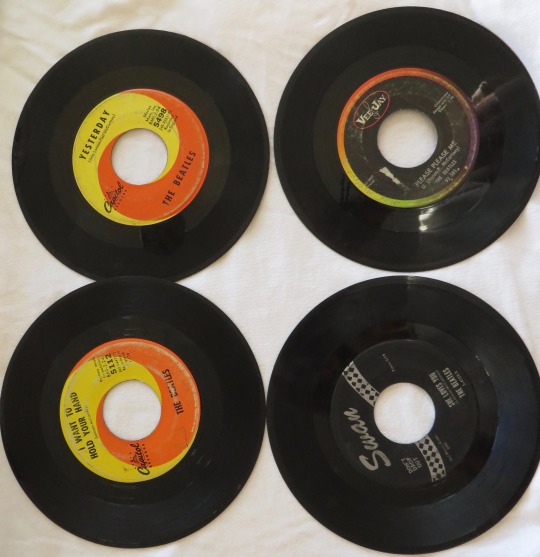
Some 45s from my collection, including the first three from the Beatles.
(Third of three parts)
Now this really IS for Beatles fans only.
Non-fans reading this, even if they managed to pay attention to the first two installments describing my little aural/intellectual immersion into the group’s musical output, will likely find my third discourse hard to take.
For here I will discuss what to outsiders would seem silly -- what it all means, or how does studying each of the tunes recorded by the Beatles make a person any different or change his or her place in the hierarchy of fandom.
For starters, we must clearly acknowledge (as we did at the start) this type of project is all about fun, like a hobby. And any written analysis likewise is done in the spirit of being an entertaining diversion from real life, meaningless in the overall scheme of things.
If you take pop group fandom — or any celebrity fandom — to a level more serious than that, then you are in a place beyond my grasp.
My effort was born of a curiosity about this legendary musical group that was important in my youth. In that regard, the project was an absolute success.
I satisfied my curiosity about Beatles songs big and small, loved and hated, popular and obscure. While I have not committed to memory many of the details, I know where to find answers to just about any questions I might have.
Beatles’ music came at me fast and furious in the 1960s. I rarely stopped to understand its origins, musicianship, meaning or other minutia beyond what was in album liner notes or news media coverage. It was just enjoyable and interesting.
The unique individuals involved also were worth understanding and following, for all their achievements and personal tales.
Now I’ve seen their production up close and personal. Good for me. Fascinating stuff. Totally worth the effort.
Do I want more? Yes, a little.
There are books that still sound interesting, like those I noted in part one (the Lewishon study, the Best or Epstein memoirs, books by Philip Norman and Barry Miles). The much-anticipated “Let It Be” movie reissue also will be fun to watch, after seeing a very rough video of a video of it that I bought off E-Bay (at least it gave me a general idea of what it looked like).
After taking a break from all-things-Beatles, I’ll tackle that stuff from time to time. (To stay sane and clear-headed, I did seek out lots of non-Beatles reading material throughout my project. Lately, I’ve discovered the crime novels of Elmore Leonard, whose works were the basis for some of my favorite movies.)
But I’m pretty sure I will never reach HUGE fan status for the Beatles (or any other celebrity, for that matter).
Those people, of which there are perhaps millions, do know all the details of the Beatles songs without looking them up in a book or the internet or Wikipedia. They own all of them in all of their forms. They also own all the music produced by the individual Beatles both before they formed and after their breakup (I pretty much stopped my purchases a few years into their solo careers, although I picked up John Lennon’s final one and the complete Traveling Willburys collection with George Harrison.)
They would spend the incredible amounts that are being charged for such major works as “Places I Remember. My Time with the Beatles,” by photographer Henry Grossman (going for $2,609); the “RTBBook. Recording the Beatles,” described on Amazon as: “A detailed look at every piece of studio gear used, full explanations of effects and recording processes, and an inside look at how specific songs were recorded,” by Kevin Ryan and Brian Kehew, going for $500 (originally $100); and “Kaleidoscope Eyes. A Day in the Life of Sgt. Pepper,” another compilation of Grossman photos going for $688.
(I also once saw a George Martin box set of materials going for over $2,000 but I can’t find it now.)
These super fans have been to Beatles concerts, either when they were together 50 years ago or as individuals in the years since. I have not, nor do I want to, really.
As I was in the midst of my project, tickets went on sale for Paul McCartney’s concert this July at Dodger Stadium in LA. OK, I said to myself, that could be interesting. He is a legend, after all. And he travels with a tremendous band, I’ve read, even if his own 76-year-old chops have long since gone weak and raspy.
I set myself a limit of $100 a ticket for myself, my wife and my brother. If we could get close enough to really feel the music and see the star performer, that would be worth the price.
Within hours of the ticket pre-sale opportunity, the best seats in the house (ground level in front of the stage) were sold, some for a few thousand dollars, all for amounts well beyond my budget.
The best I could get for $100 was seats up in the stands by the baseball stadium’s press box. I may as well as sit at home and watch the concert on a laptop with headphones. Not much of an experience.
Those people who immediately ponied up the big bucks for such a geezer Beatle performance are the HUGE fans. They have probably been to more than one such concert and will keep going to them.
They would probably also spend serious dough to see Ringo Starr’s all-star band perform, something I would not consider (his songs and solo hits are not in my top 300 favorite Beatles songs, as a group or individuals).
The closest I would have come to paying a major sum to see a former Beatles was if I had had a chance to see The Traveling Willburys, with Harrison, Tom Petty, Roy Orbison, Bob Dylan and Jeff Lynne. That was a super group with an outstanding sound.
Huge Beatles fans also travel to London to see the places that are part of the group’s lore, likely have memorabilia like guitars or sticks, have T-shirts or other clothing with Beatles pictures or logos, know every detail of their personal lives and go weak at the sound of their music.
Many probably have rooms decorated with Beatles stuff. They go to downtown LA for Starr’s annual peace and love declaration. They follow news about them every day on their website.
To me, that level of interest borders on obsessive. However, I cannot criticize such people without being somewhat of a hypocrite. I’ve gone to the edge of that pond, after all. I just won’t jump in, and a lot of what’s holding me back is simply the cost (of books, tickets, memorabilia, plane fare, etc.) not philosophy.
I wish nothing for the best for those who do find the time and money to devote to the subjects of their passion, stopping short of stalking or otherwise intruding in the subjects’ lives.
For now, I am happy being a Really Big Beatles Fan with an advanced degree in discography.
#Beatles#the beatles#paul mccartney#john lennon#george harrison#ringo starr#music#music history#beatles fan
2 notes
·
View notes
Video
youtube
Engineer Brian Kehew talks Van Halen and what he found in the Warner Bro...
0 notes
Text
Abbey Road: Studio 2
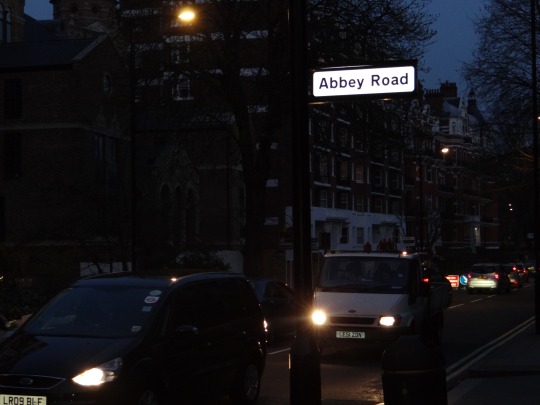
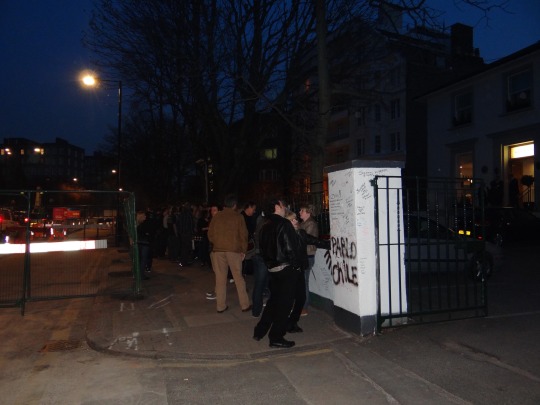

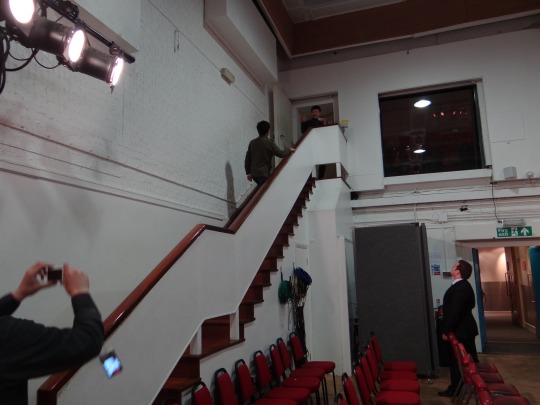

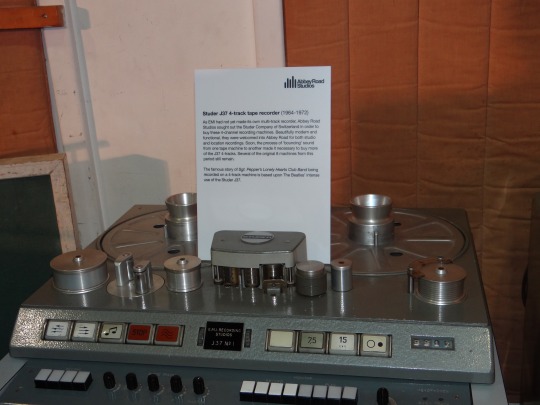
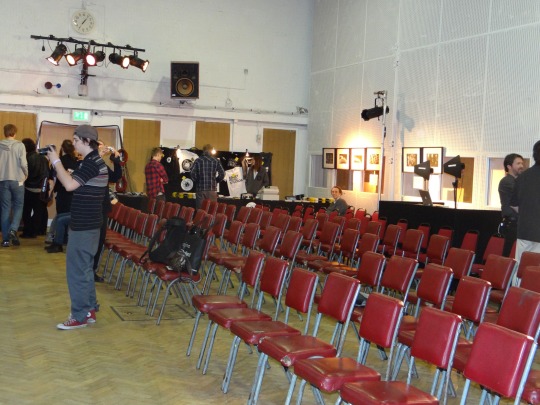


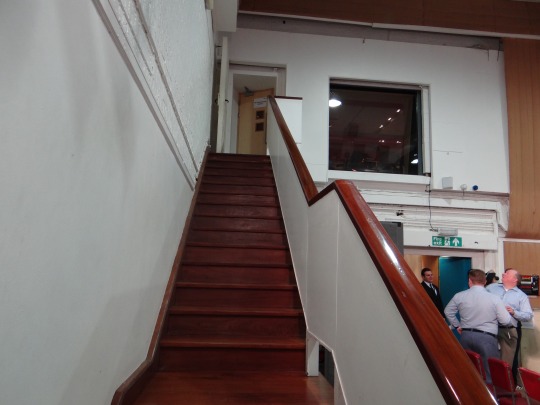
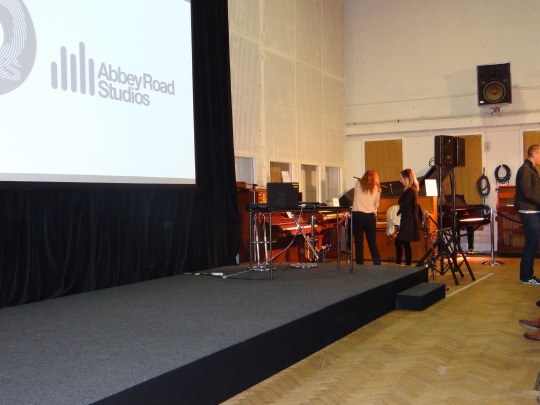
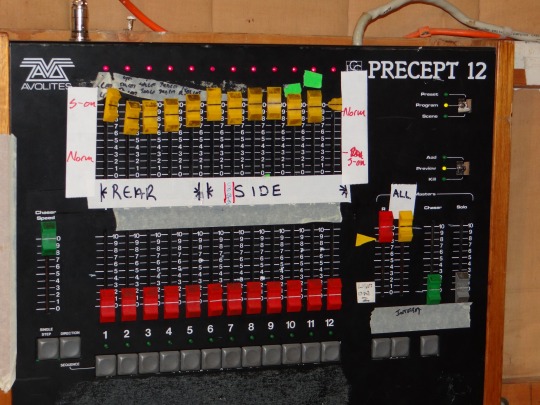
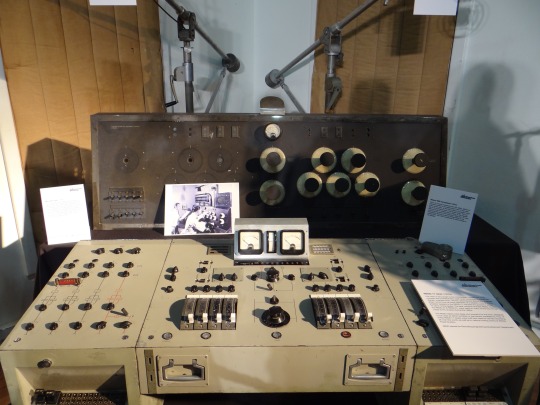
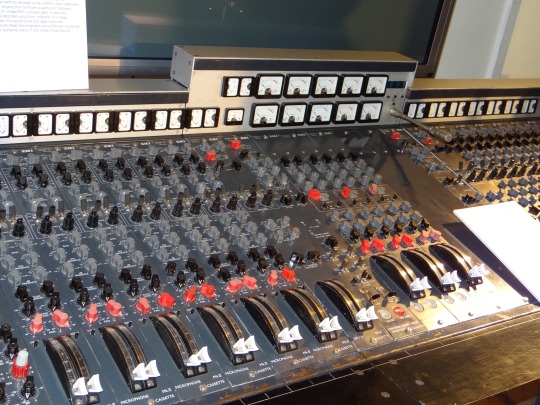



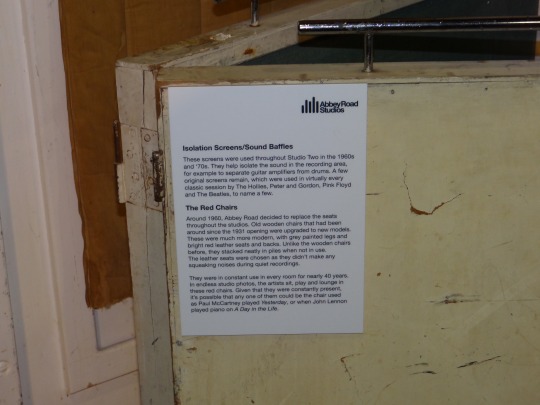
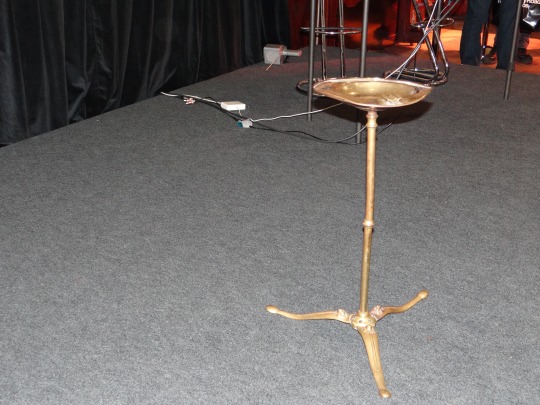
Ringo’s Ashtray!
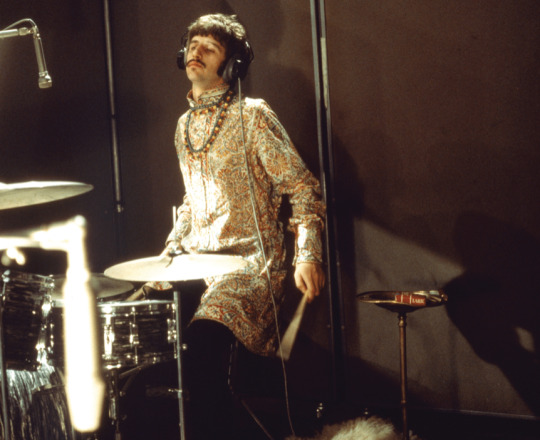
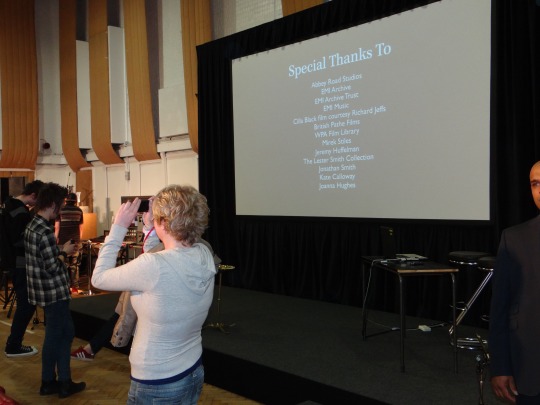
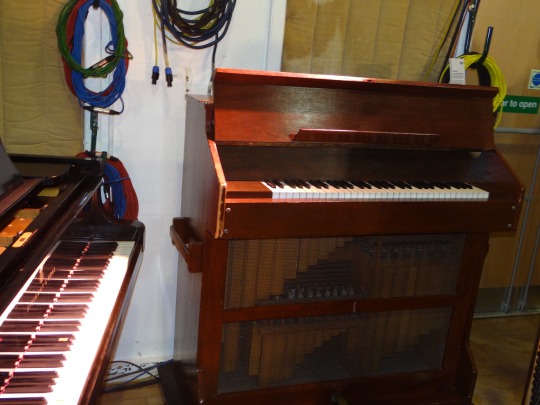
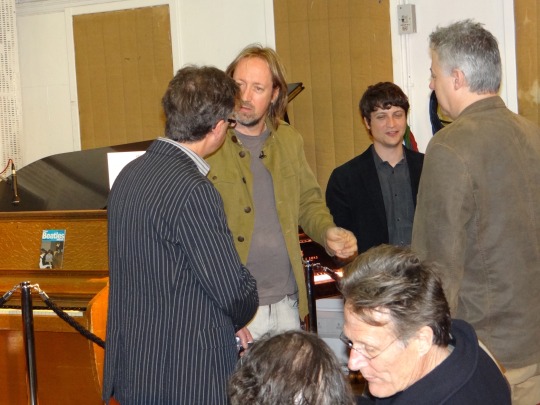
Brian Kehew & Kevin Ryan
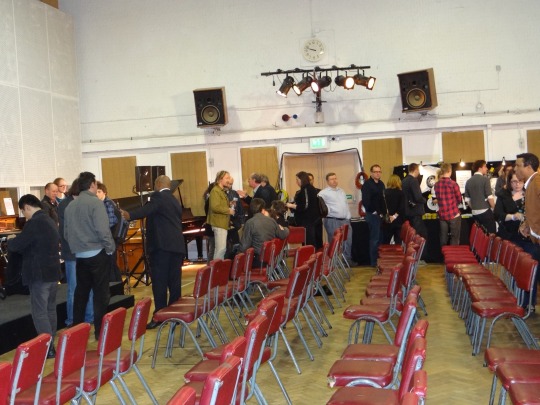
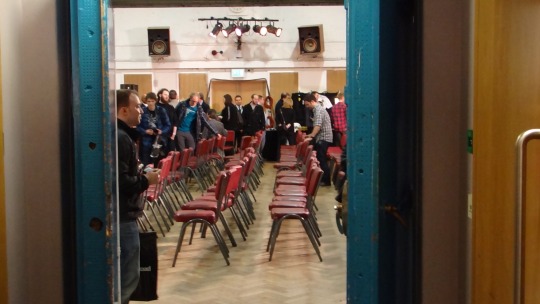
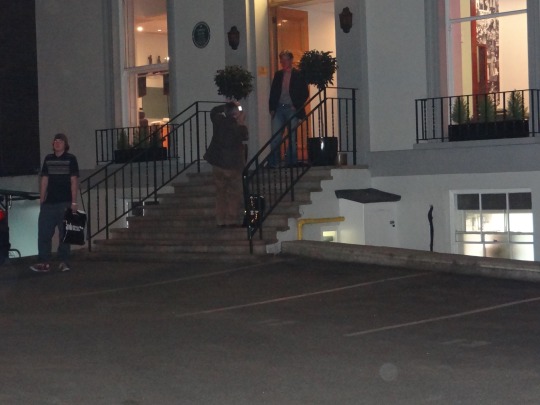
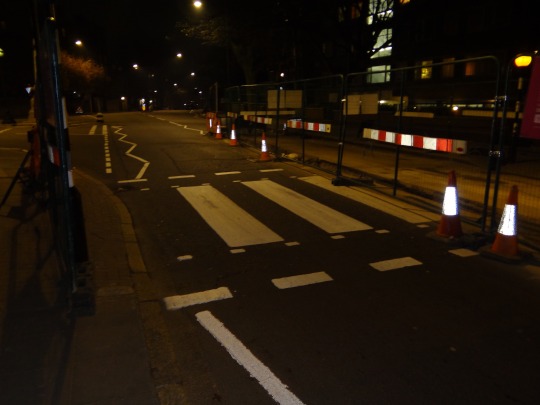
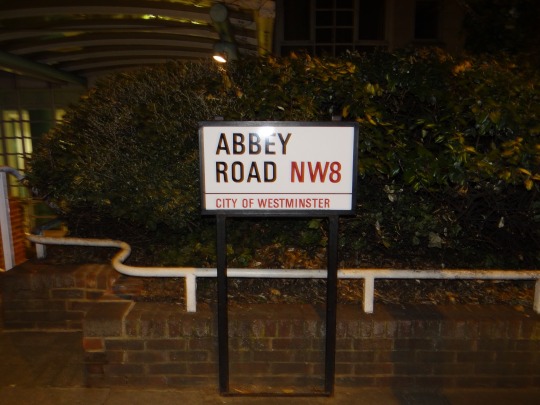

“Recording The Beatles”
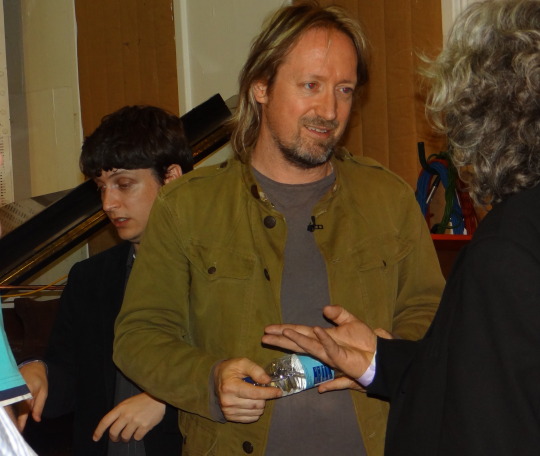
Abbey Road. 23 Marzo 2012
Assistendo alla Conferenza ’80 Years of Recording at Abbey Road Studios’,
tenuta da Brian Kehew e Kevin Ryan,
Autori di “Recording The Beatles”
(an Amazing Book!)
0 notes
Quote
I've never seen this before, but there were times when we would record two vocals for a song and say, "Let's do it again, let's do another vocal," and then try to do a third one. She'd say, "I don't know if I can sing this anymore, I'm too sad," because she doesn't sing a song without fully feeling what it means. She's not a person that sits there with a lyric sheet and says, "Here's verse two." She's written it with special lyrics and controlled writing, but oftentimes when she sings a song on stage or even in the studio, she is feeling it at that moment. It's a true feeling.
It's a very powerful and unique thing that I've witnessed; when she sings heavy songs, she does mean it at that moment, even when she's on stage doing old songs. She gets into that feeling.
And for her, it's very natural. That's the only way to be. Whereas I'm sure even Tom Petty or Bob Dylan don't necessarily feel the lyrics like what they meant in 1969 or '78, but she feels it. No matter when she wrote it, she feels it at the moment. She does not pretend and perform a song. It's very interesting. And that's just, to her, the way that's natural. But it's very draining and it is emotional. It's a whole different experience with her than with other artists from what I've seen.
Brian Kehew (The Untold Story Of Fiona Apple's Extraordinary Machine)
148 notes
·
View notes
Text
A radio station is streaming the entire Woodstock festival, minute by minute, starting at 5:07 pm Thursday
Woodstock, the era-defining 1969 music festival, celebrates its 50th anniversary tomorrow. To give listeners a chance to experience every second of the three-day shebang, radio station WXPN in Philadelphia, home to NPR's World Cafe, is broadcasting the entire festival. "WXPN is going to pay the most effective tribute to the music, the way it was originally performed, at exactly the same times the sets were performed to give our listeners a feel for how it all really went down," said Associate General Manager for Programming Bruce Warren. This is all thanks to the massive box set, Woodstock — Back to the Garden: The Definitive 50th Anniversary Archive, which was released earlier this month after a painstaking, 14-year restoration by producers Andy Zax and Brian Kehew. For this milestone, critics and fans alike have been reminiscing about and unpacking the mythology of Woodstock, ensconced in both the 1970 documentary film and its accompanying three-disc soundtrack.
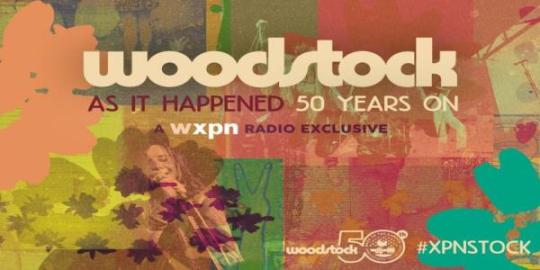
source https://feedimo.com/story/65290062
0 notes
Photo
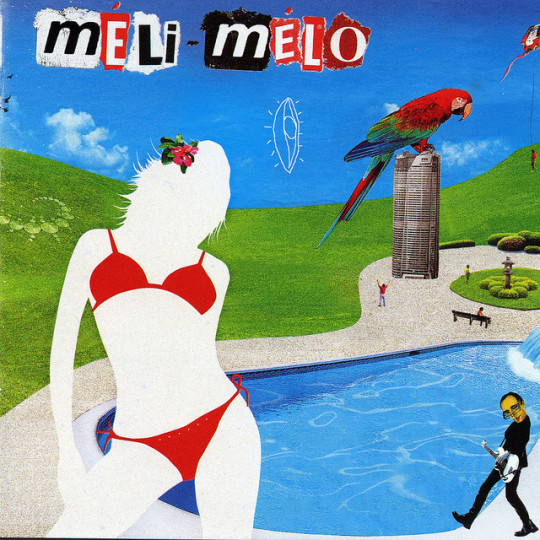
Listened to "20th Century Boy" by Brian Kehew http://spoti.fi/2grmaxj
0 notes
Text
Updated list of bands that I have seen live - April 2020
Robert Plant x7
Weezer x5
Flogging Molly x4
Fu Manchu x4
Berlin x2
Fenians x2
Hot Hot Heat x2
Kings of Leon x2
Lifehouse x2
Ozomatli x2
Smashing Pumpkins x2
Sean Wheeler x2 (guest appearances with Brant Bjork & Mojave Lords)
Brian Wilson x2
311
A Flock Of Seagulls
The Aggrolites
The Aquabats!
Arcade Fire
The B-52s
The Bangles
Travis Barker & DJ AM
Beck
Best Coast
(BIG)PIG
Biz Markie
Brain Vat
Brant Bjork
Blasting Concept
Blind Pilot
Blues Traveler
Bouncing Souls
The Bravery
Jeff Bridges and the Abiders
Cake
Candlebox
Circa 62
Gary Clark Jr.
The Creepy Creeps
Dishwalla
earthlings? (including guests Josh Klinghoffer and Chris Goss)
The English Beat
Fenix TX
Fishbone
FM-84
Foo Fighters
Michael Franti and Spearhead
The Freeks
Gabriella Evaro
Garbage
John Garcia (acoustic w/Ehren Groban)
John Garcia and the Band of Gold
Kyle Gass Band
Current version of The Glenn Miller Orchestra
Goldfinger
Hollywood U2 (cover band)
Israel Vibration
Jet
The Lions
Little Axe
Live
Los Lobos
Madcap
Madness
Madonna
Marcy Playground
Mammoth Thunderpower
Mates of State
Maureen and the Mercury 5
Paul McCartney
The Midnight
Missing Persons
moe.
Mojave Lords (including guest Sean Wheeler)
Alanis Morissette
The New Dubliners
The New Pornographers
Nobody Cares
Oasis
Nick Oliveri (Death Acoustic)
One Man Army
Ozma
Jimmy Page & The Black Crowes
Page & Plant
Petty and the Heartshakers (cover band)
Robert Plant and Allison Krauss
Ra Ra Riot
Red Hot Chili Peppers (caught Chad’s shredded drumstick after Under the Bridge)
The Rentals
The Revolution
The Romantics
Save Ferris
Smash Mouth
Current version of The Sons of the Pioneers
Ringo Starr (2 songs with Paul McCartney)
Steel Pulse
Stinky Pinky
Three Dog Night
Transers
Tricky
U2
Violent Femmes
M. Ward
Stevie Wonder
Yawning Man
Yeah Yeah Yeahs
ZenToniC
Zwan
-Didn’t see live, but was in the vicinity or interacted-
I was at a record signing for the Pretenders at Licorice Pizza at La Cumbre Mall in Santa Barbara and met the band when I was 10 months old or so. I don’t remember it, but Chrissie said I was going to be a drummer. I guess I was banging on the table.
Should have been at the Where The Streets Have No Name video shoot, but U2 started early thanks to the LAPD and I missed it by an hour. People were still hanging out at the corner in downtown LA when I got there. Eventually got around to seeing U2.
I had an email exchange with Brian Kehew of The Moog Cookbook sometime around 1999.
I camped at the next campsite over from Gyl Bonus, guitar player for The B Foundation. I haven’t seen them live, but I hear it’s a great show.
I had a ticket to see Jimmy Page and the Black Crowes with Fu Manchu in Irvine in 2000, but Jimmy cancelled the tour. Technically, I have seen both bands, so this should not be in this section.
Was invited to the recording of the live section of the “Enemies” EP by Frank Jordan, but I had to work my shift at Kmart. I should have gone.
A friend offered to give me his ticket and could have made it to the last half of a Pearl Jam concert in Irvine, but was too lazy. I should have gone.
Back to Santa Barbara, Bob Marley & the Wailers played a concert and I was in the same city at the same time but I was 3 months old or some shit. I wish I could have gone and been capable of enjoying it.
I was in close proximity to Johnny Halliday and his wife when they arrived at LAX a few years ago. Johnny was known as the “French Elvis”. There was a good amount of paparazzi, so I may be in the background of a picture in a French tabloid.
Met the band Spacetrucker at the Sky Valley sign on their tour which included Stoned and Dusted the next day. They gave me a free copy of their first album and the whole experience was amazing and magical.
Have been the presence of Dandy Brown, Jesika Von Rabbit and Lee Joseph in Palm Springs, and Arthur Seay at the Sky Valley sign.
I am friends with the drummer of Overwhelming Colorfast, of which Weezer once opened for, and who opened for The Ramones.
I am considered family by extremely close family friends of which one was the drummer for Out Vile Jelly and Idaho, and also made some great songs under the name twodoggarage.
15 notes
·
View notes
Text
Analog Alien Podcast #13 - Brian Kehew Interview
In this podcast, Jack & Joe from Analog Alien Guitar Pedals interview Brian Kehew - one of the biggest techs in the music business today. You’ll hear how Brian went from humble beginnings and the road he took that eventually led him to being a tech for The Who. It’s a story we’re sure that you will enjoy.
Check out this episode!
0 notes
Text
My journey continues….
(Page 2014)
This blog is a continuation of a series. See here (Page 2016a) for the previous blog.
Year 2016: 5th Observation Part c
Whilst I was making headway with the development of my music praxis – significant headway in my opinion – , my actual production plan still did not have the degree of clarity I had hoped for after four (4) weeks. I therefore decided to go through each step of my Praxis v5a in terms of my production process, deliberately and systematically.
Figure I – Praxis v5a (Page 2016b)
In following this process I made my 5th Observation.
Figure II – 5th Observation (Page 2017)
Practice
Of the five (5) stages of practice, I was in the first stage of creative practice: the creative stage.
Creative Stage
Pre-production Stage
Production Stage
Post-Production Stage
Distribution Stage
In the creative stage, I brainstormed a number of Project 1 creative ideas based on my project brief. The five (5) track EP was to be representative of some aspect of my life: past, present or future envisioning.
Site
The next element listed in my Praxis 5a was site.
“Listening to the making of ‘Dark Side of the Moon’ (with Alan Parsons as engineer), I ponder…. Unlike so many US bands of the time whose core attraction was the live performance, Pink Floyd and other British bands I was predominantly listening to and influenced by, effectively used the studio as their stage” (Page 2016c; Gallagher 2012; Price 2015; Ryan & Kehew 2006)
For me, I had always been a performer. In the tradition of US bands, my core expression was on stage in a live performance. I had recorded specific music styles that I knew could translate easily to the live sound context – the stage in a venue. However, the musical style I was focussing on here – psychedelic rock – clearly had demands for different types of technology required.
The music style I was pursuing was inspired by British-based psychedelic rock artists of the late 1960’s and early 1970’s. The site of these performances were in the studio, and therefore each of these creations were done with the aid of studio-based technologies.
Technologies
In order for me as an artist/performer to be able replicate and reproduce the range of studio-created music and sonic tones, I was going to need access to these devices. I pondered: how was this to be done in the production process effectively and efficiently?
I had at this time access to an elaborate range of virtual technologies third (3rd) party plug-in instruments and processors. These included replications of many analogue devices of the particular production era I was focussed on – late 1960’s and early 1970’s – , including instruments such as synthesisers; and audio processors in the three categories of spectral, dynamic and time-domain.
Figure III – 3rd Party Plug-Ins by Manufacturer (Page 2016d)
Whilst I had access to some of the more notable manufacturers such as Eventide, Lexicon and SSL; along with access to a broad range of more recent notable manufacturers such as AIR Music Technology, Antares Audio Technologies, Avid, East West, IK Multimedia, Massey Plugins Inc, Native Instruments, PSP Audioware, Sonixvox, Sonnox, SoundToys, XILS-Labs and iZotope; I wondered whether the virtual technology replications were going to allow me the dense layering of the textures required for the psychedelic music style. Analogue processing devices were well regarded for their warmth of tone and range of sonics, with music recorded with such equipment often characterised with aesthetically pleasing device-induced distortion, hum and other noise associated with imperfect analogue devices [1].
Technology – Stage versus Studio
Of the technology I could readily access – contemporary equipment of analogue, digital or digital virtual devices – either within my studio, at either the SAE Institute studios (as a full-time Senior Lecturer), or at the QUT studios (as a post-graduate research student) what was going to assist me in this process? My mind wandered considering many options.
My performance live rig was quite elaborate for its function to reproduce typical guitar-based rock music. With other floor-based – analogue and digital – devices, and a broad range of analogue guitar amplifiers, my live rig setup was flexible. With a range of – mostly digital – dynamic, spectral and time-based processors, I could reproduce and sculpt just about any music and sonic tone to reproduce just about any contemporary organic rock-type sound in a performance situation, on stage. In addition, I also have a range of guitar emulators – such as the Fractal Axe-FXII – that allowed me to bypass the use of any guitar amplifiers, and go directly into a venue’s PA system, exponentially expanding the music and sonic palette I could access.
Figure IV – Live rig (Page 2016e)
However, psychedelic rock music was more complex, with multiple textures and layers that occurred often simultaneously. Was my rig in its current form going to be sufficient? Whats more, if I did create psychedelic-based music in my studio – with multiple textures and layers – using my wide range of digital virtual devices complex, how could I effectively and efficiently reproduce these in a live performance context? Perhaps I needed to develop my current studio technology, expanding my current quite limited studio rig of outboard processors.
Figure V – Studio rig (Page 2016f)
I needed to research and consider pieces of equipment that will complement what I currently have, and what I need to fuse my performance and recording of my craft, avoiding a valley or void between the two very important aspects of my music-making practice….. two aspects that have not met before: stage and studio equipment. I decided that what I didn’t want to do was, was create a studio album that I could not then easily replicate in a live performance. I had always been a performer, and to be able to perform congruently to my recording was a major motivator for me as an artist.
I was clearly invested in this pre-production stage of the music-making process. I needed to consider how I was going to approach the production and what equipment I would use for best effect. It was obvious to me how necessary it was for me to continue to immerse my self in two ways: the sourcing of more textural artifacts discussing the recording techniques in that era (books – The Beatles, Pink Floyd, articles on Molly Meldrum, etc); and also researching a range of equipment that I acquire, that would supplement the equipment I already had, that could more effectively replicate the sounds of psychedelic rock, that I could add to my performance rig. Yes, I desired a rig that I could effectively roll from my studio, onto a stage; and once that performance was complete, to then roll the same rig from the stage, back into the studio. It was my goal to be able to replicate all aspects of my musical and sonic creations in any of my performance locations – on stage, or in a studio.
Footnotes
[1] There are countless testimonies heralding the desired qualities and characteristics of analogue devices across decades of music and sound equipment, and cultural production reviews. However, three more recent acclaimed cultural productions detailing the historical significance of such devices and production workflows are: Ryan & Kehew’s 2006 book “Recording the Beatles: the studio equipment and techniques used to create their classic albums”; Guggenheim’s 2009 “It Might Get Loud” starring Led Zeppelin’s Jimmy Page, U2’s The Edge and The White Stripes’ Jack White; and Grohl, Monroe and Young’s 2013 documentary “Sound City” about a Los Angeles studio during the 1970’s and 1980’s where a number of East Coast artists had hits with records recorded and produced at the facility. These artists included Buckingham and Nicks, Rick Springfield, Fleetwood Mac, and Tom Petty and the Heartbreakers.
This blog series is planned to continue next month with Doctoral Pilot Study Part 3a (Page 2016g). It is intended for this blog series to continue on a regular basis as I progress through my doctoral research project.
References
Gallagher, Mitch. 2012. “Studio legends: Alan Parsons on “Dark Side of the Moon”. Accessed 4th February, 2016. http://www.premierguitar.com/articles/Studio_Legends_Alan_Parsons_on_Dark_Side_of_the_Moon.
Grohl, Dave, Mark Monroe and Neil Young. 2013. Sound city. Sony Music Entertainment. DVD.
Guggenheim, Davis. 2009. It might get loud. Sony Pictures Classics. DVD.
Onion image courtesy of: Onion Layers Accessed 15th December, 2014
Page, David L. 2017. Figure II – 5th Observation image courtesy of David L Page Created 10th June, 2017
Page, David L. 2016g. Doctoral Pilot Study – Part 3a Accessed 5th March, 2016
Page, David L. 2016e. Figure V – Studio rig image courtesy of David L Page. Accessed 29th February, 2016
Page, David L. 2016e. Figure IV – Live rig image courtesy of David L Page. Accessed 29th February, 2016
Page, David L. 2016d. Figure III – 3rd Party Plug-Ins by Manufacturer image courtesy of David L Page. Created 29th February, 2016
Page, David L. 2016c. Doctoral Pilot Study iNotes Accessed 29th February, 2016
Page, David L. 2016b. Figure I – Praxis v5a image courtesy of David L Page. Created 31st January, 2016
Page, David L. 2016a. Doctoral Pilot Study – Part 2b Accessed 17th February, 2016
Page, David L. 2014 image courtesy of David L Page Created 15th December, 2014
Practice image courtesy of David L Page Accessed 4th February, 2016
Price, Andy. 2015. “The Making of Pink Floyd’s Dark Side of the Moon.” Article. Accessed Feb 4 2016. http://www.musictech.net/2015/06/landmark-productions-pink-floyd-the-dark-side-of-the-moon.
Psychedelic Rock image courtesy of Ultimate Guitar.com Accessed 5th February 2016
Ryan, Kevin and Brian Kehew. 2006. Recording the Beatles: the studio equipment and techniques used to create their classic albums. London: Curvebender.
– @David L Page 29/02/2016
– updated @David L Page 05/03/2016
– updated @David L Page 10/06/2017
Copyright: No aspect of the content of this blog or blog site is to be reprinted or used within any practice without strict permission directly from David L Page.
SaveSaveSaveSaveSaveSave
SaveSave
SaveSave
SaveSave
SaveSave
SaveSave
SaveSave
SaveSave
SaveSaveSaveSave
SaveSaveSaveSave
SaveSave
SaveSave
SaveSave
SaveSave
SaveSave
SaveSave
SaveSave
SaveSave
SaveSave
SaveSave
SaveSaveSaveSave
SaveSave
SaveSave
SaveSave
Doctoral Pilot Study – Part 2c My journey continues…. (Page 2014) This blog is a continuation of a series. See here (Page 2016a) for the previous blog.
0 notes
Text
The Woodstock tapes, revealed
A new CD box set, "Woodstock 50: Back to the Garden," captures virtually every minute of audio from the 1969 music festival, from the performers to P.A. announcements and audience interactions. In an exclusive visit to the Warner Music Vault in Los Angeles, "Sunday Morning" producer Sara Kugel talked with music producer Andy Zax and audio engineer Brian Kehew about canvassing the archive's rare holdings to create a 36-hour magnum opus chronicling an unparalleled event in music history: "Woodstock 50: Back to the Garden."
from Home - CBSNews.com https://ift.tt/2YnMjSK
via Blogger https://ift.tt/2YsrQw8
0 notes